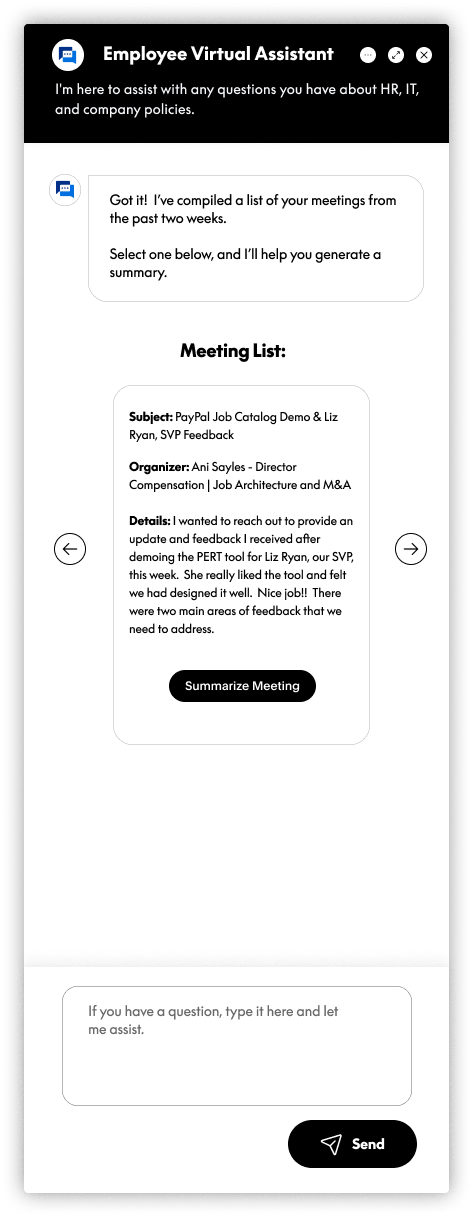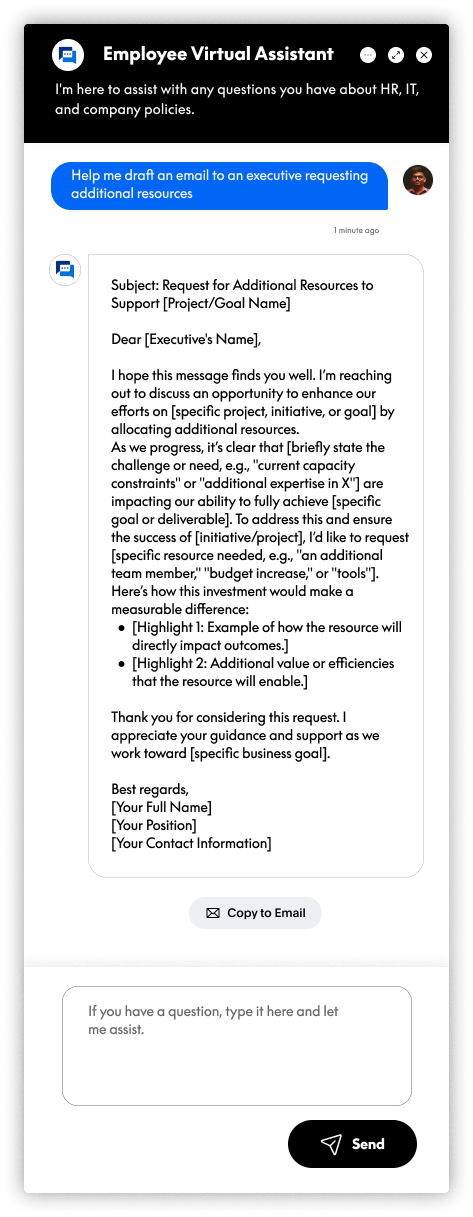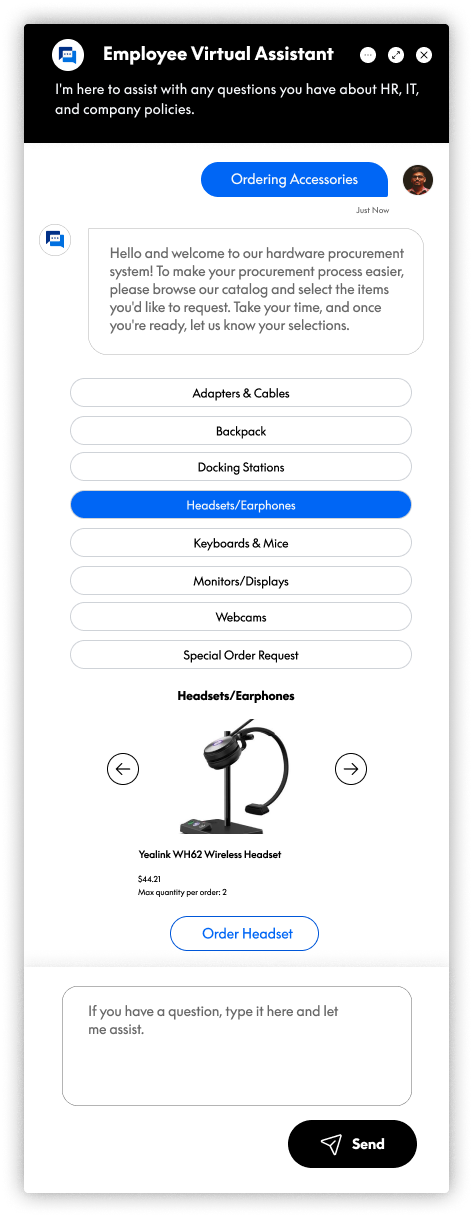


Employee Virtual Assistant (EVA)
Rapidly prototyping an AI assistant for enterprise-scale productivity
In January 2025, my organization leader reached out with an urgent request: create a prototype to simulate the persistent EVA (Employee Virtual Assistant) concept for presentation at the CEO Staff Update. I had just 18 days to transform my Sr. Director's AI vision into a comprehensive prototype for PayPal's Leadership Summit.
Working under tight executive deadlines, I designed 10 distinct AI assistant use cases and produced a promotional video highlighting the talent acquisition flow for the leadership presentation. This project showcases rapid prototyping under pressure, conversational UI design at enterprise scale, and translating executive vision into both actionable design specifications and compelling executive communication materials.
Unlike typical design projects, this wasn't about solving existing user pain points—it was about bringing a visionary concept to life. My leader needed a prototype that could effectively simulate his idea of a persistent AI assistant that would revolutionize how employees interact with internal tools and information.
The constraints were significant: no time for user interviews, no competitive analysis, and an immovable deadline. Success meant creating something compelling enough to convince executive leadership and provide a foundation for the development team to begin implementation.
Given the compressed timeline, I had to make strategic decisions about where to invest my time. I took inspiration from existing LLM chat experiences while ensuring the design adhered to PayPal's brand guidelines. The key was balancing speed with quality—creating something that felt polished and production-ready, not just a rough concept.
My leader provided conceptual demo slides outlining the use cases he envisioned for EVA. My task was to transform these rough concepts into a cohesive, branded, interactive prototype that felt production-ready and could effectively communicate the vision to executive leadership.
After creating the 4 use cases provided by leadership, I added an additional 6 comprehensive use cases that demonstrated EVA's versatility across different roles and workflows:
Each use case was designed to demonstrate how EVA could streamline common workplace tasks, from administrative work to complex decision-making processes. The talent acquisition flow became the centerpiece of the promotional video, showcasing the assistant's ability to surface relevant information and facilitate faster hiring decisions.
The final deliverable was a comprehensive Figma prototype that connected all 10 use cases in a cohesive, interactive experience. The prototype demonstrated EVA's conversational interface, intelligent information retrieval, and seamless integration with existing PayPal systems.
Alongside the prototype, I created a promotional video that distilled the core value proposition into a compelling narrative for the leadership team. The video focused on the talent acquisition use case, showing how EVA could transform the hiring process from days to minutes.
Interact with the EVA prototype:
The prototype and promotional video were completed on time, allowing my leader to successfully present the EVA concept during the CEO Staff Summit. The presentation resonated with leadership, leading to immediate approval for the development team to begin implementing the ideas for a Beta release of the Employee AI chatbot.
For my work on this project, I received a Prodigy Award from both my organization leader and the CTO, recognizing the impact of the experience design and the ability to deliver under extreme time constraints.
This project taught me the importance of adaptability and resourcefulness. Working under such tight deadlines meant abandoning the traditional design process—no user research, no iterative testing, no time for stakeholder workshops. Instead, I had to leverage existing design patterns, trust my instincts, and focus ruthlessly on execution.
I learned that sometimes the most valuable contribution isn't following the "perfect" process, but delivering something tangible that moves the organization forward. The experience reinforced that design isn't just about the artifacts we create, but about enabling decision-making and action.
Most importantly, I discovered I could thrive under pressure. The constraints forced me to be more decisive, more efficient, and more focused on what truly mattered. While I wouldn't recommend this approach for every project, proving I could deliver at this pace has expanded my confidence and capabilities as a designer.